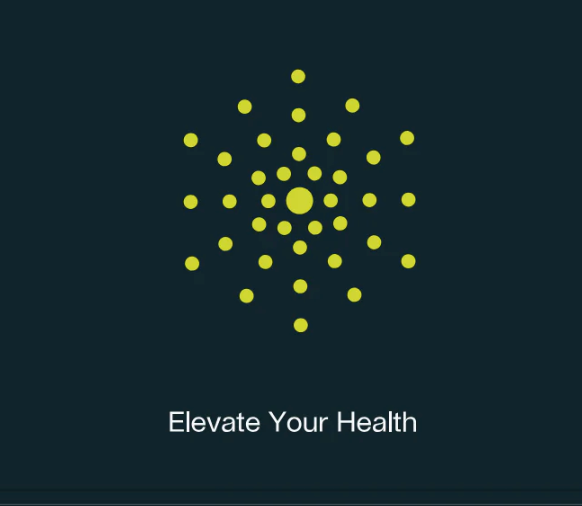Brain fog is a complex cognitive phenomenon characterized by difficulties with executive function, attention, memory, and language processing that significantly impacts quality of life. This report explores the neurobiological mechanisms underlying brain fog, current supportive interventions, and the evidence supporting various treatment approaches.
Understanding Brain Fog
Brain fog is not a formal medical diagnosis but rather a colloquial term describing a constellation of cognitive symptoms that can occur in various conditions. It manifests as difficulties with concentration, memory retrieval, word-finding, mental clarity, and executive functioning. The experience is often described by patients in metaphorical language, with symptoms frequently characterized as relapsing-remitting and unpredictable in nature15.
The condition has garnered significant attention recently due to its prevalence as a post-COVID-19 symptom, though it also occurs in other conditions including dementia, sleep disorders, and following traumatic brain injuries. In 2024, Chinese researchers developed and validated a 17-item Brain Fog Assessment (BFA) scale comprising three factors: cognitive decline (nine items), confusion-disorientation (five items), and fatigue (three items)11. This assessment tool represents an important step toward standardizing the evaluation of brain fog in clinical settings.
Brain fog significantly impacts daily functioning, with research showing adverse effects on activities of daily living, work performance, and interpersonal relationships. Many patients report difficulty multitasking, lack of support, poor self-perception, and fear of income or employment loss15. The condition is particularly burdensome for individuals of working age, creating substantial socioeconomic consequences.
Neurobiological Mechanisms and Pathways
Understanding brain fog requires examining several proposed pathophysiological mechanisms:
Cerebral Metabolic Alterations
Brain fog appears strongly associated with disruptions in cerebral glucose metabolism. Studies using 18F-fluorodeoxyglucose-positron emission tomography (FDG-PET) have identified abnormal patterns in brain regions responsible for cognitive processing5. Similar patterns of cerebral glucose hypometabolism have been observed in both post-COVID brain fog and conditions like Alzheimer's disease, suggesting potential overlap in metabolic dysfunction mechanisms5.
Neuroinflammation and Immune Dysregulation
Excessive inflammatory responses can significantly impact cognitive function. In post-COVID brain fog, research indicates abnormalities in innate and adaptive immunity, including monocyte expansion, T-cell exhaustion, and prolonged cytokine release10. These immune irregularities trigger neuroinflammatory responses, microglial activation, white matter changes, and microvascular alterations that disrupt normal cognitive processing10.
Microvascular Abnormalities and Coagulopathies
Microvascular clot formation and endothelial dysfunction present another pathway to brain fog development. These processes can lead to capillary occlusion, hypoxic neuronal injury, and blood-brain barrier disruption10. In the context of COVID-19, research has investigated both anticoagulant and antiviral therapies, finding that while both may be beneficial, antiviral approaches showed superior results in addressing underlying neurodamage markers13.
Gut-Brain Axis Dysregulation
Recent research has highlighted the bidirectional communication between the gut microbiota and brain function. Imbalances in gut microbial communities can promote systemic inflammation, potentially contributing to cognitive symptoms12. This connection has stimulated interest in dietary and probiotic interventions for brain fog management.
Viral Persistence
In COVID-related brain fog, studies suggest that viral persistence may play a significant role. Research conducted through 2025 demonstrated that antiviral treatment was "the single best predictor of clinical recovery" in long COVID cohorts, accompanied by rapid declines in neurodamage markers upon antiviral administration13.
Evidence-Based Treatments for Brain Fog
Strongly Supported Interventions
Cognitive Rehabilitation Therapies
Constraint-Induced Cognitive Therapy (CICT), a novel rehabilitation approach combining behavior change techniques with computerized cognitive training, has shown promising results in clinical trials. A 2024 pilot randomized controlled trial found that CICT produced "very large improvements" in instrumental activities of daily living for individuals with post-COVID brain fog16. This approach represents one of the few evidence-based non-pharmacological interventions specifically developed for brain fog.
Ketogenic Medium Chain Triglyceride Supplementation
For brain fog associated with impaired cerebral glucose metabolism, ketogenic medium chain triglyceride (MCT) supplementation offers a potential metabolic solution. MCTs provide an exogenous route to nutritional ketosis, producing ketone bodies that can serve as an alternative energy source for brain cells when glucose metabolism is compromised5. Research supports MCT efficacy in improving cognition in elderly populations and those with Alzheimer's disease, with potential applications for post-COVID brain fog5.
Antiviral Therapy for COVID-Related Brain Fog
In long COVID brain fog specifically, antiviral treatments have emerged as a highly effective approach. A large prospective cohort study with lengthy follow-up (220 person-years) found that second-line antiviral treatment, particularly Paxlovid, was the single strongest predictor of clinical recovery13. This finding supports the viral persistence hypothesis and suggests a significant therapeutic window for antiviral interventions in this population.
Moderately Supported Interventions
Prebiotic, Probiotic, and Symbiotic Supplementation
Gut-brain axis modulation through pre-, pro-, and symbiotic supplementation shows moderate evidence of effectiveness for cognitive symptoms. Research indicates cognitive benefits in healthy older individuals and those with mild cognitive impairment, though results are more mixed in younger populations and those with high physical activity levels12. The mechanisms likely involve reduced systemic inflammation and improved metabolic regulation.
Hypothalamic Phospholipid Liposomes
For post-COVID brain fog specifically, hypothalamic phospholipid liposomes have been proposed as a potential adjuvant therapy. These compounds have an established history in treating cerebral metabolic alterations resulting from neuroendocrine disorders1. While clinical evidence is preliminary, the rationale is supported by the role of hypothalamic dysfunction in post-COVID cognitive symptoms.
Anticoagulant Therapy
For brain fog associated with coagulation abnormalities, particularly in post-COVID syndrome, anticoagulant treatments like Asaflow and Clopidogrel may provide benefit13. Though research indicates antiviral approaches may be superior for treating underlying mechanisms, anticoagulants remain an important consideration for addressing microvascular dysfunction contributing to cognitive symptoms.
Interventions with Limited Evidence
Commercial Dietary Supplements for Brain Health
Despite aggressive marketing, many commercial brain health supplements lack scientific validation. An analysis of twelve products marketed for brain health revealed concerning inconsistencies: 67% had at least one ingredient listed on the label that was not detected in analysis, while 83% contained compounds not disclosed on their labels9. The scientific claims made by these products often lack substantiation, highlighting the need for consumer caution.
Nutritional Supplementation for TBI-Related Brain Fog
For brain fog following traumatic brain injury, nutritional supplementation has theoretical benefits but limited clinical evidence. While certain nutrients may support neural recovery processes, more research is needed to establish definitive recommendations and therapeutic protocols8.
Challenges in Brain Fog Management
Despite growing recognition of brain fog as a significant health concern, several challenges remain in its effective management:
Diagnostic Complexity
Brain fog encompasses a wide spectrum of cognitive symptoms that can vary considerably between individuals and underlying conditions. The recent development of standardized assessment tools represents progress, but more refined diagnostic approaches are needed11.
Limited Treatment Options
Few interventions have undergone rigorous clinical evaluation specifically for brain fog. Most current approaches are adapted from treatments for other conditions or address hypothesized mechanisms rather than targeting brain fog directly15.
Individual Variability
Response to brain fog interventions shows significant individual variation. For example, probiotic benefits appear more pronounced in certain populations (older adults, those with existing cognitive impairment) than others (young, healthy individuals)12. This variability complicates treatment recommendations and necessitates personalized approaches.
Conclusion
Brain fog represents a significant cognitive challenge with diverse underlying mechanisms including metabolic dysfunction, neuroinflammation, microvascular abnormalities, and gut-brain dysregulation. The strongest evidence supports cognitive rehabilitation therapies, ketogenic MCT supplementation, and condition-specific interventions like antivirals for COVID-related brain fog. Moderate evidence exists for gut microbiome modulation, hypothalamic phospholipid liposomes, and anticoagulant therapies in appropriate contexts.
Commercial dietary supplements marketed for brain health generally lack scientific validation and may not contain the ingredients listed on their labels. As research advances, more targeted and personalized approaches to brain fog management will likely emerge, particularly as our understanding of the underlying neurobiological mechanisms continues to improve.
Citations:
- https://www.ncbi.nlm.nih.gov/pmc/articles/PMC10488182/
- https://www.ncbi.nlm.nih.gov/pmc/articles/PMC11689469/
- https://www.ncbi.nlm.nih.gov/pmc/articles/PMC8844964/
- https://www.semanticscholar.org/paper/30b855b497f5c174ab84c285a044e4eaf20b9289
- https://www.ncbi.nlm.nih.gov/pmc/articles/PMC10320593/
- https://www.ncbi.nlm.nih.gov/pmc/articles/PMC3851850/
- https://www.semanticscholar.org/paper/e2ac31f0b18efad56af5aae9593b64819c46bba0
- https://pubmed.ncbi.nlm.nih.gov/36680752/
- https://www.ncbi.nlm.nih.gov/pmc/articles/PMC7153641/
- https://www.ncbi.nlm.nih.gov/pmc/articles/PMC10001044/
- https://pubmed.ncbi.nlm.nih.gov/39207772/
- https://www.ncbi.nlm.nih.gov/pmc/articles/PMC10975805/
- https://www.semanticscholar.org/paper/715ed7d4827203604adc2e0a0e5a709bdd5ec260
- https://pubmed.ncbi.nlm.nih.gov/29060541/
- https://www.ncbi.nlm.nih.gov/pmc/articles/PMC9737348/
- https://www.ncbi.nlm.nih.gov/pmc/articles/PMC11261935/
- https://pubmed.ncbi.nlm.nih.gov/37874482/
- https://www.ncbi.nlm.nih.gov/pmc/articles/PMC8809226/
- https://pubmed.ncbi.nlm.nih.gov/36600580/
- https://www.ncbi.nlm.nih.gov/pmc/articles/PMC9648928/
- https://www.semanticscholar.org/paper/69684ce65456f6aa1d7ff53bdd7910a4ee103037
- https://www.ncbi.nlm.nih.gov/pmc/articles/PMC11172483/
- https://pubmed.ncbi.nlm.nih.gov/37758316/
- https://pubmed.ncbi.nlm.nih.gov/37192042/
- https://pubmed.ncbi.nlm.nih.gov/38482818/
- https://www.semanticscholar.org/paper/38362e3af7551e2f7d786bc078184147ea430922
- https://www.semanticscholar.org/paper/3d2e9d89bb2c56c360338f662b392f05492aee3b
- https://pubmed.ncbi.nlm.nih.gov/38916979/
- https://pubmed.ncbi.nlm.nih.gov/36036410/
- https://www.ncbi.nlm.nih.gov/pmc/articles/PMC11227073/
- https://www.ncbi.nlm.nih.gov/pmc/articles/PMC11291286/
- https://www.ncbi.nlm.nih.gov/pmc/articles/PMC10712873/
- https://www.semanticscholar.org/paper/586662afdd67b7a11dd3d1756caeaa16787e914c
- https://www.ncbi.nlm.nih.gov/pmc/articles/PMC10550050/
- https://www.semanticscholar.org/paper/aaeb62540a39b63d8f0835a9e9399e4e8bcc46e5
- https://www.ncbi.nlm.nih.gov/pmc/articles/PMC9521557/
- https://www.semanticscholar.org/paper/9fb4b4cef09a845e9692acd5d5359dd6327f46ce
- https://pubmed.ncbi.nlm.nih.gov/37624381/
- https://pubmed.ncbi.nlm.nih.gov/39322223/








